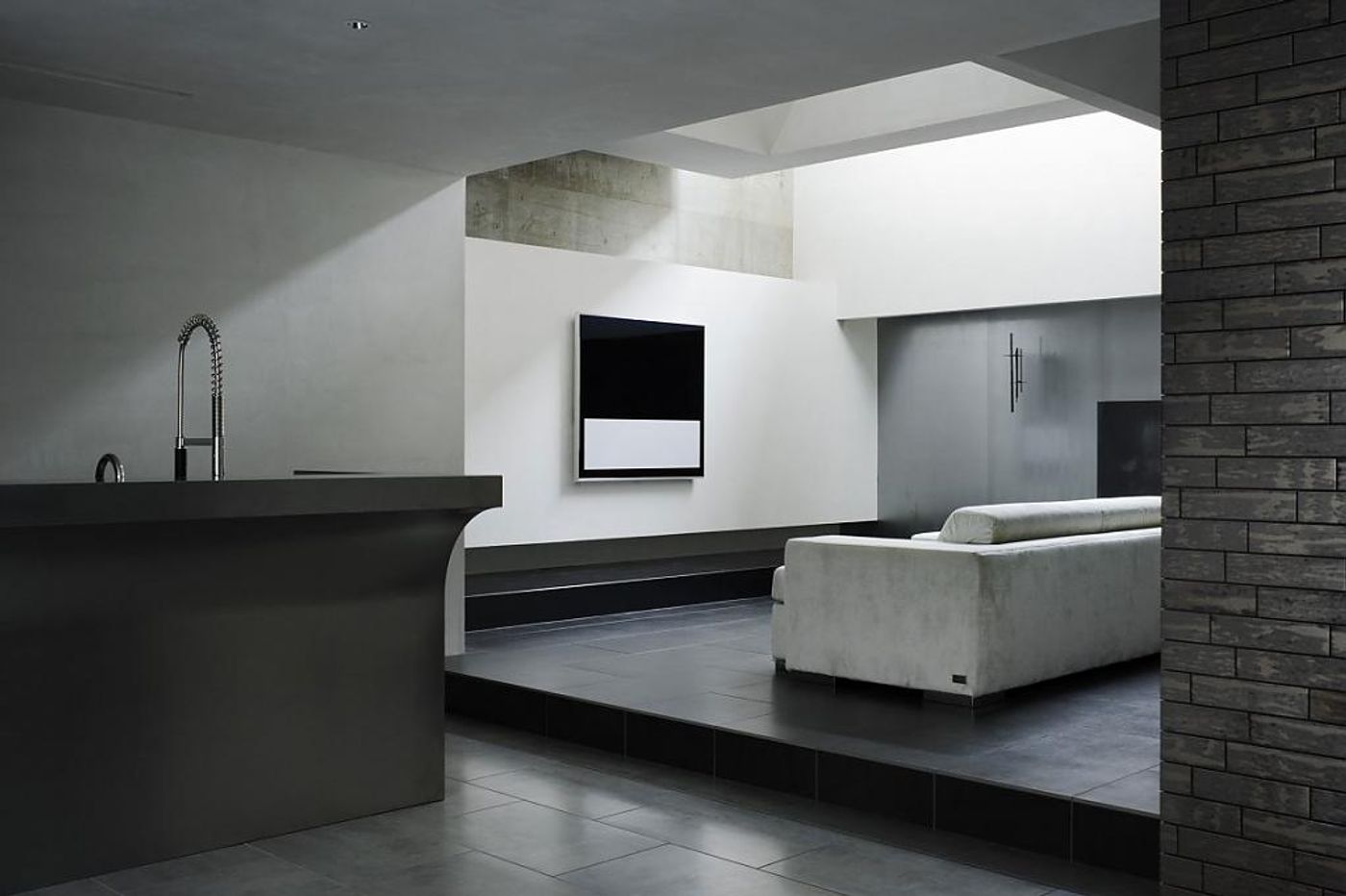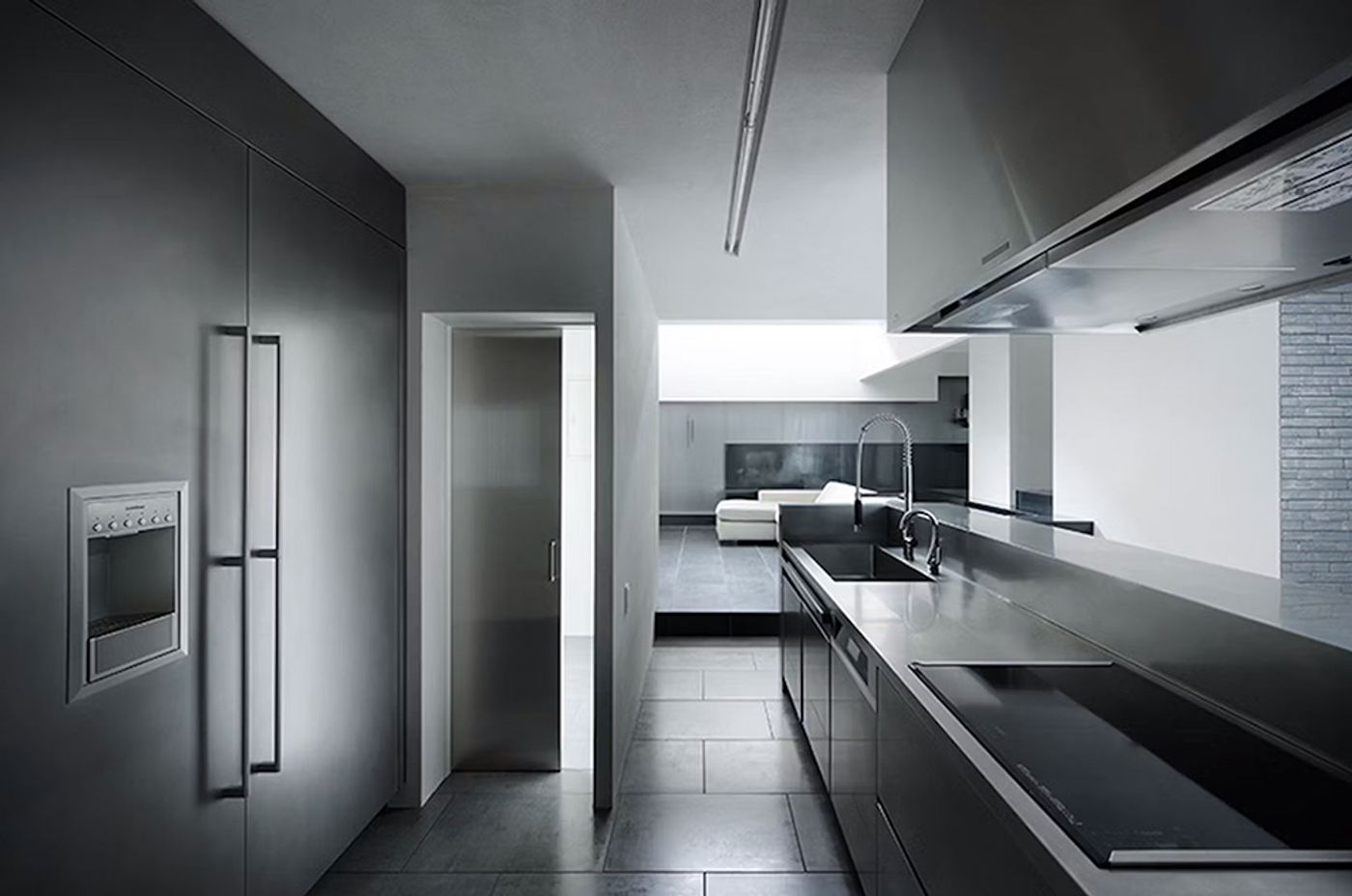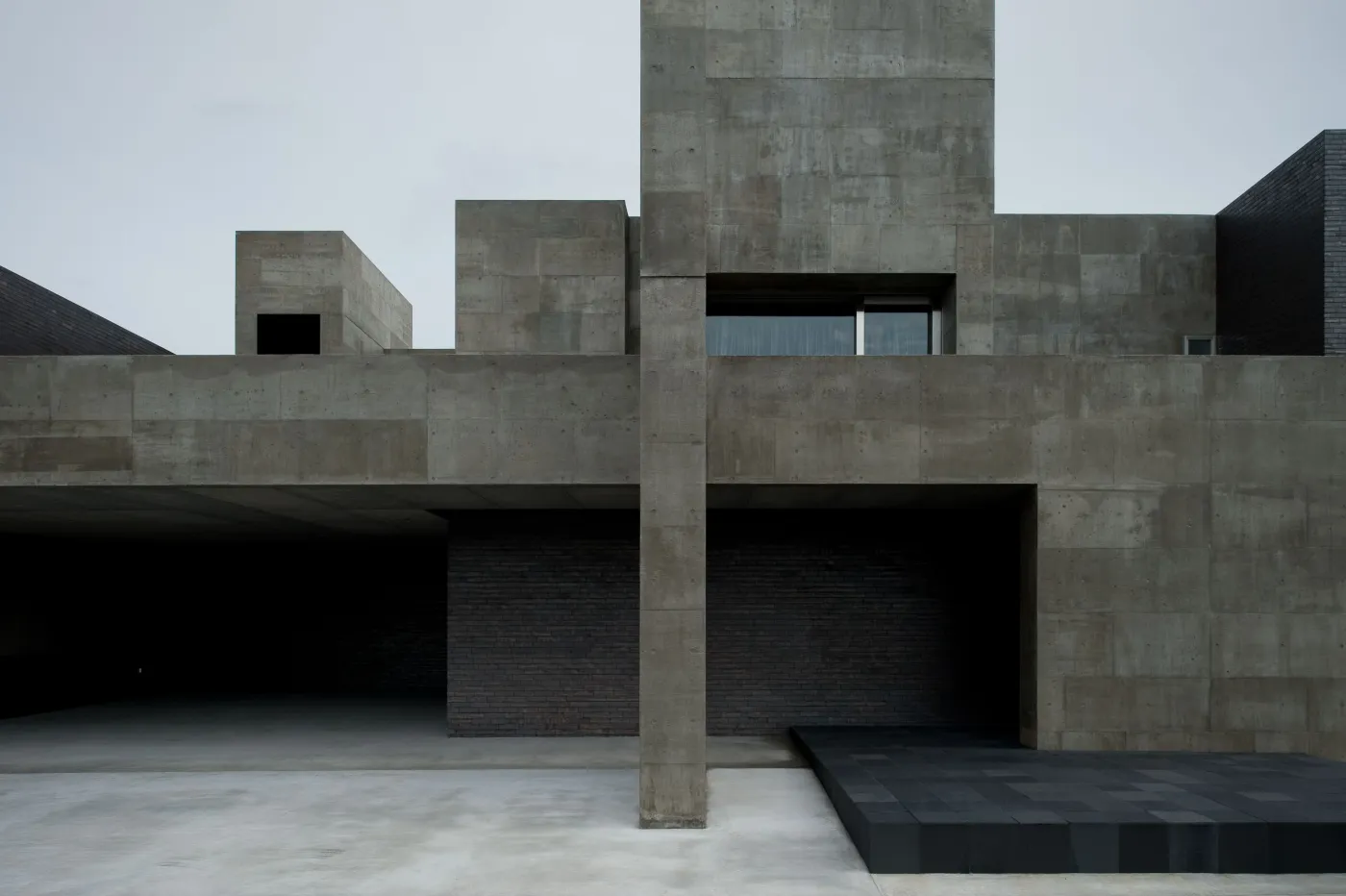
The House Of Silence By FORM/Kouichi Kimura Architects in Shiga, Japan
Words by Demetrios Gkiouzelis
Location
Shiga, Japan
The House Of Silence By FORM/Kouichi Kimura Architects in Shiga, Japan
Words by Demetrios Gkiouzelis
Shiga, Japan
Shiga, Japan
Location
A common belief within architectural circles is that buildings should be influenced by their surrounding context and harmonically blend with it, whether man-made or natural. Japanese studio FORM/Kouichi Kimura Architects have gone against this school of thought and have designed a concrete house in Shiga, Japan that intentionally defies this notion.
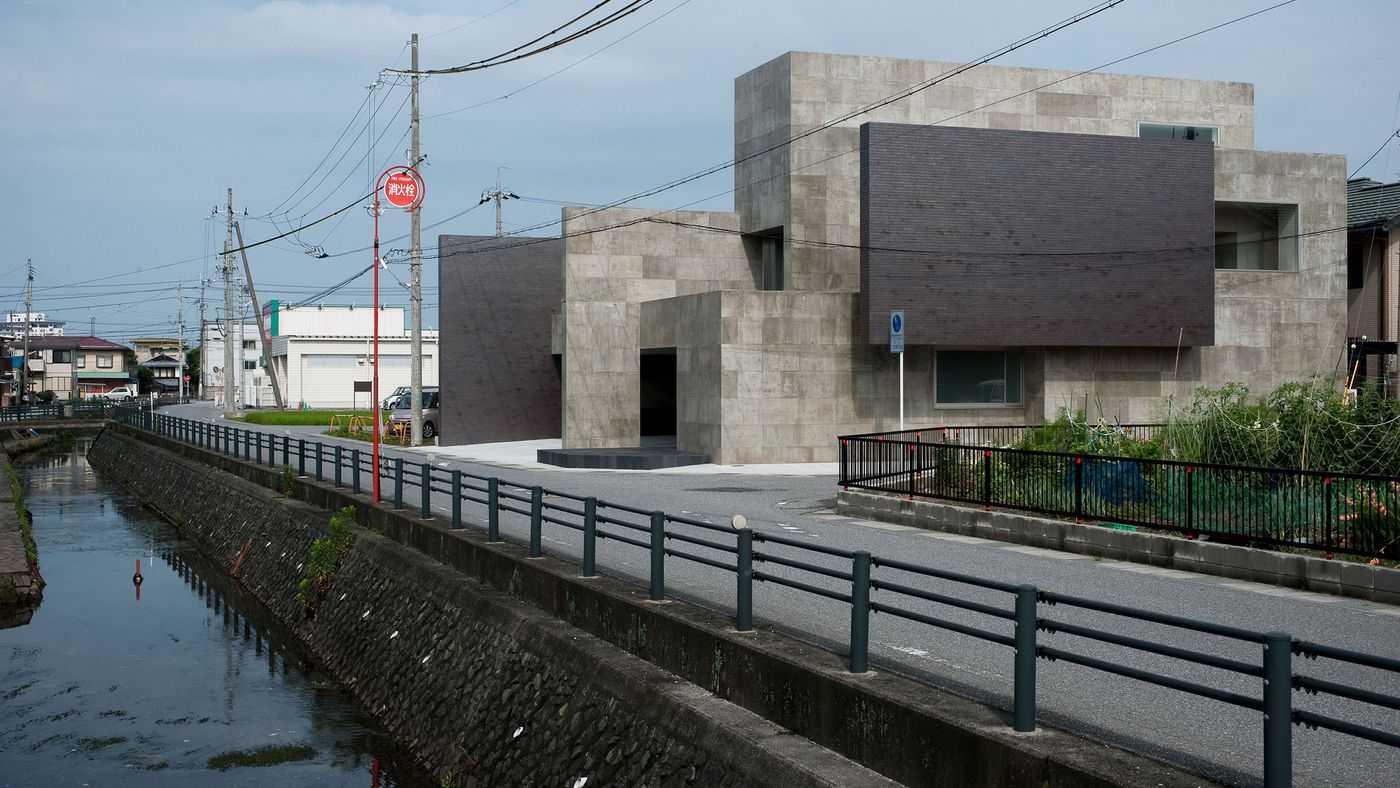
Photo © Kei Nakajima.

Photo © Kei Nakajima.
Named ‘House of Silence’, the two-storey building is a structure completely independent from its surroundings, appearing materially, aesthetically and structurally alien to its environs. ''The client wanted to have a house which is not influenced by the environment of its location'', as the architects explain. However, there is more to the house than a simple deviation in architectural style. As its name reveals, the House of Silence was designed to be noticeably cut off from the buzzing city, not as much in terms of noise cancellation as in terms of visual obstruction.
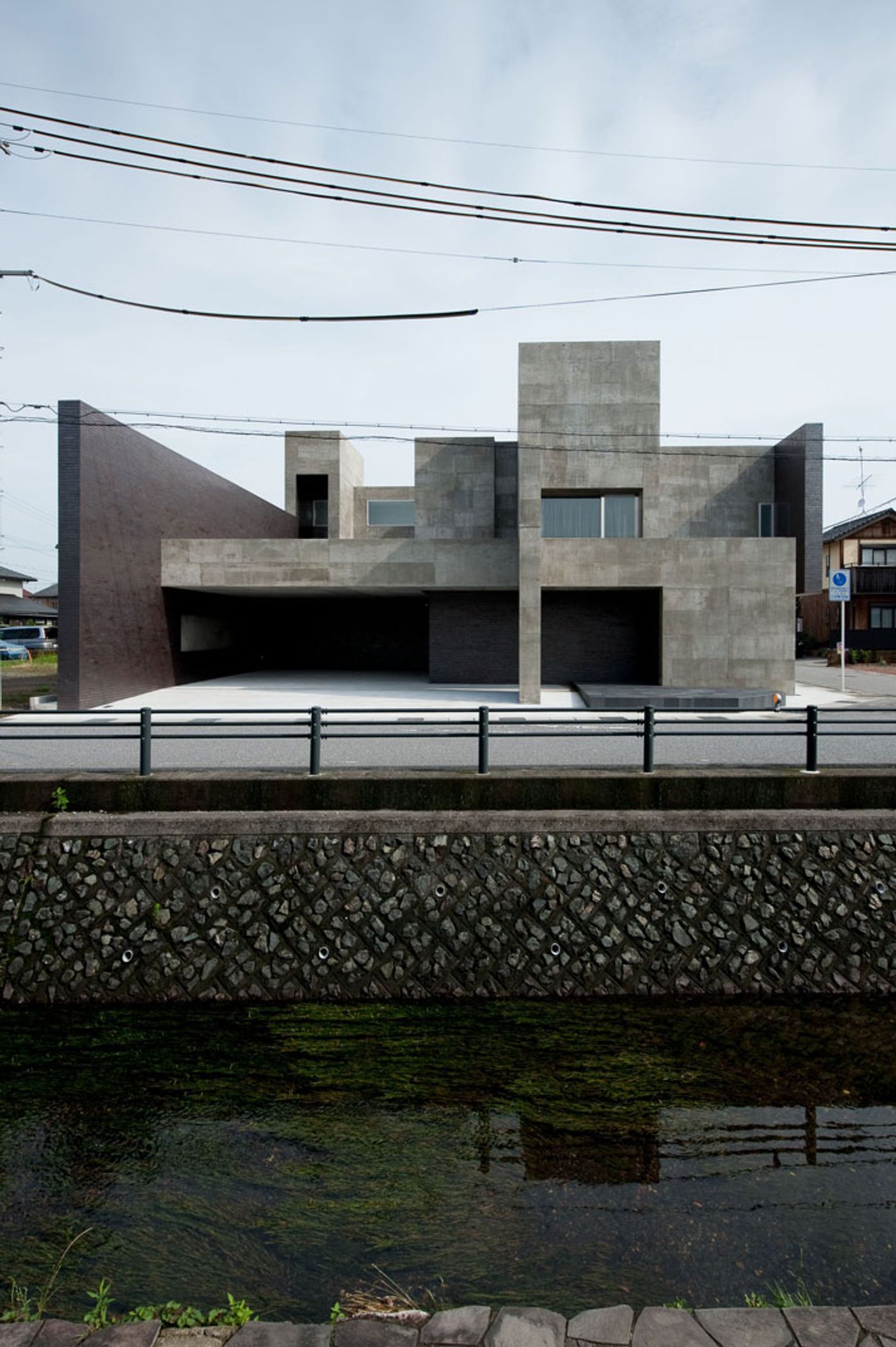
Photo © Kei Nakajima.
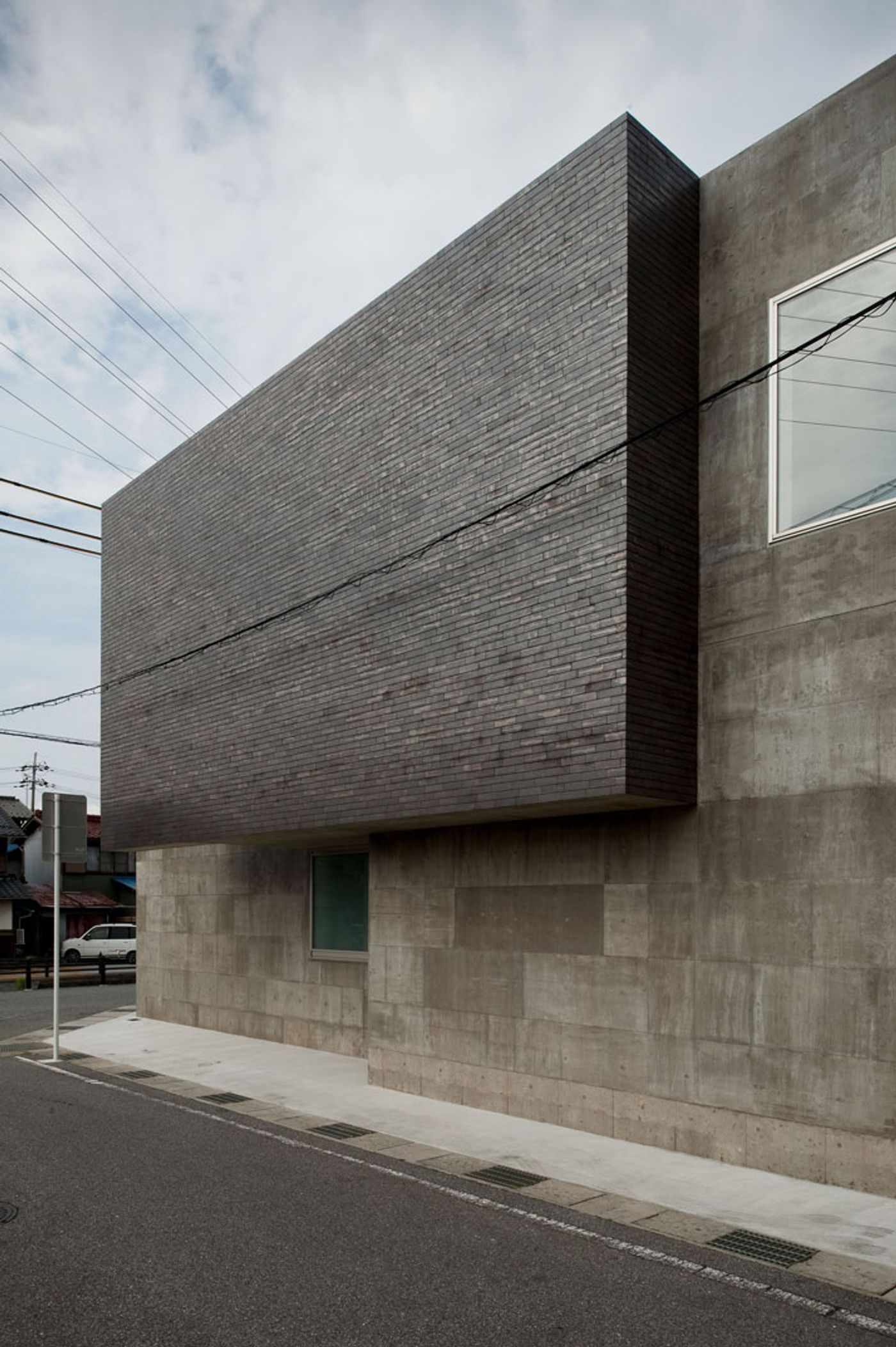
Photo © Kei Nakajima.

Photo © Kei Nakajima.
The house is a rigid concrete volume composed of solid surfaces sporadically interrupted by a few windows. High walls rise like a barrier forming a protective perimeter layer that obstructs visual connection to the rest of the city. Cubic volumes and intersecting planes are slotted together to create a robust outer shell. Inside it, the eye rests in silence and serenity away from the bustling city. An opening like a belfry and an inner court entirely isolated from the outside world hint at the variation of spaces inside.
Contrasting its heavy exterior facade, the house’s interior is unexpectedly open and bright. What is nestled inside is a sequence of spacious rooms connected by a continuous line of flow. Instead of walls, the rooms are divided by ceiling heights, different floor levels and types of light. As the architects like to point out: “This house will give you the experience of going through a variety of sequences, like going through cloisters with the light”. The interior further exploits structural and natural elements for an inviting aesthetic effect. Linear forms and protruding surfaces elongate space, while the contrast of the height tricks the eye into thinking that the space is even deeper and wider than it actually is. In addition to this, the secluded inner court plays with natural light, showing a variety of expressions as the light changes throughout the day.
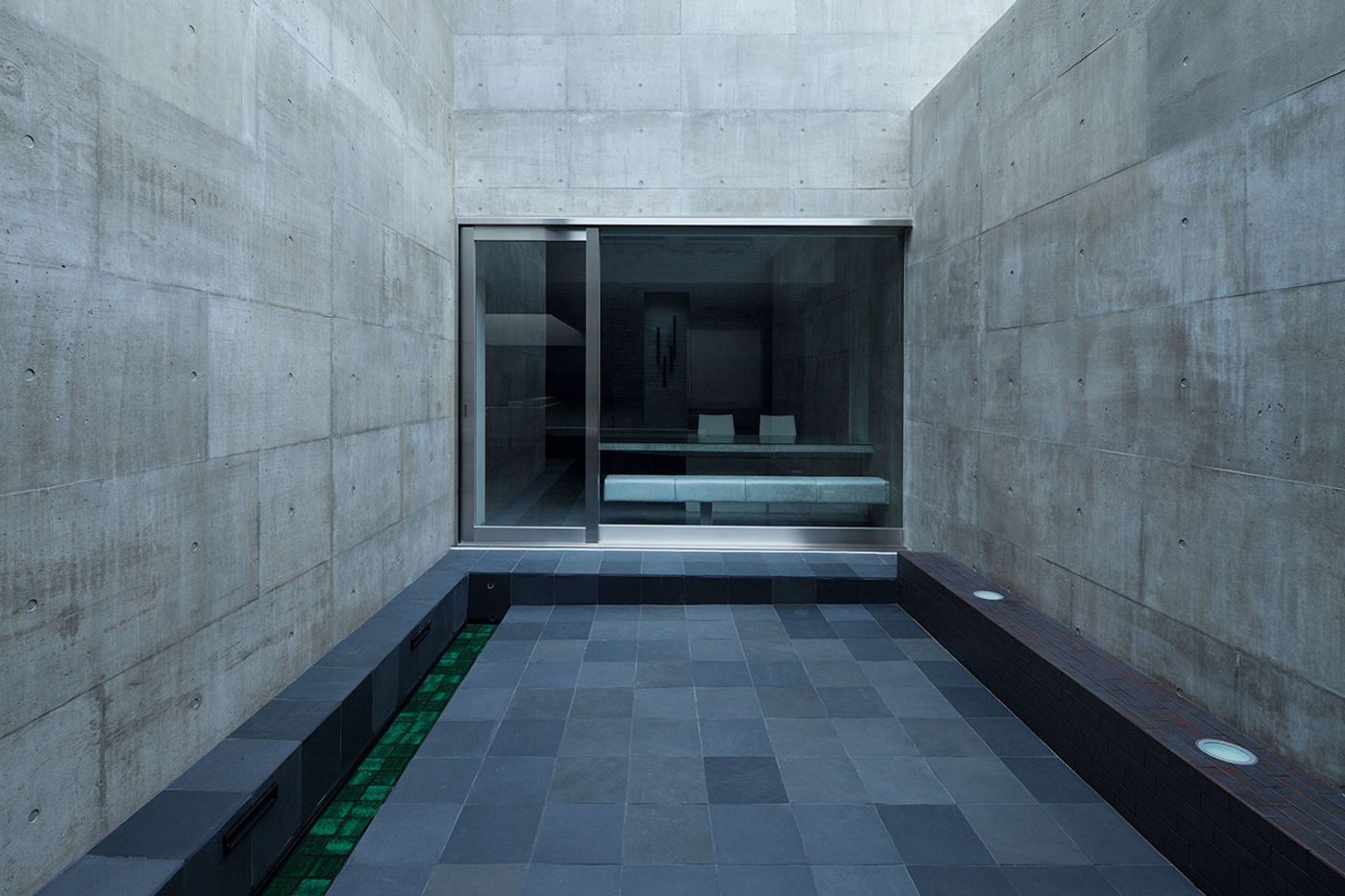
Photo © Kei Nakajima.
The rough concrete finish of the walls is pleasantly complemented by lightly adorned monochromatic spaces and surfaces covered in shiny tiles, creating a unified atmosphere between inside and outside. In fact, the same aesthetic is carried on throughout the furnishings with tiled worktops in neutral tones, concrete shelves protruding from the walls and a glass dining table that sits on a precast concrete base.
Visually isolated from its environs, the house rejects the outside world and offers a haven of serenity inside. Although it exists as a landmark in the town, it also offers highly secured levels of seclusion. Heavy and guarded, it stands like a fortress of privacy for its residents balancing two opposing elements; extreme closure and inviting openness. Its rigid style may not immediately highlight its domestic qualities, but its structural attitude towards the city certainly does. For what else is the home if not a quiet, silent place to escape the noisy city.
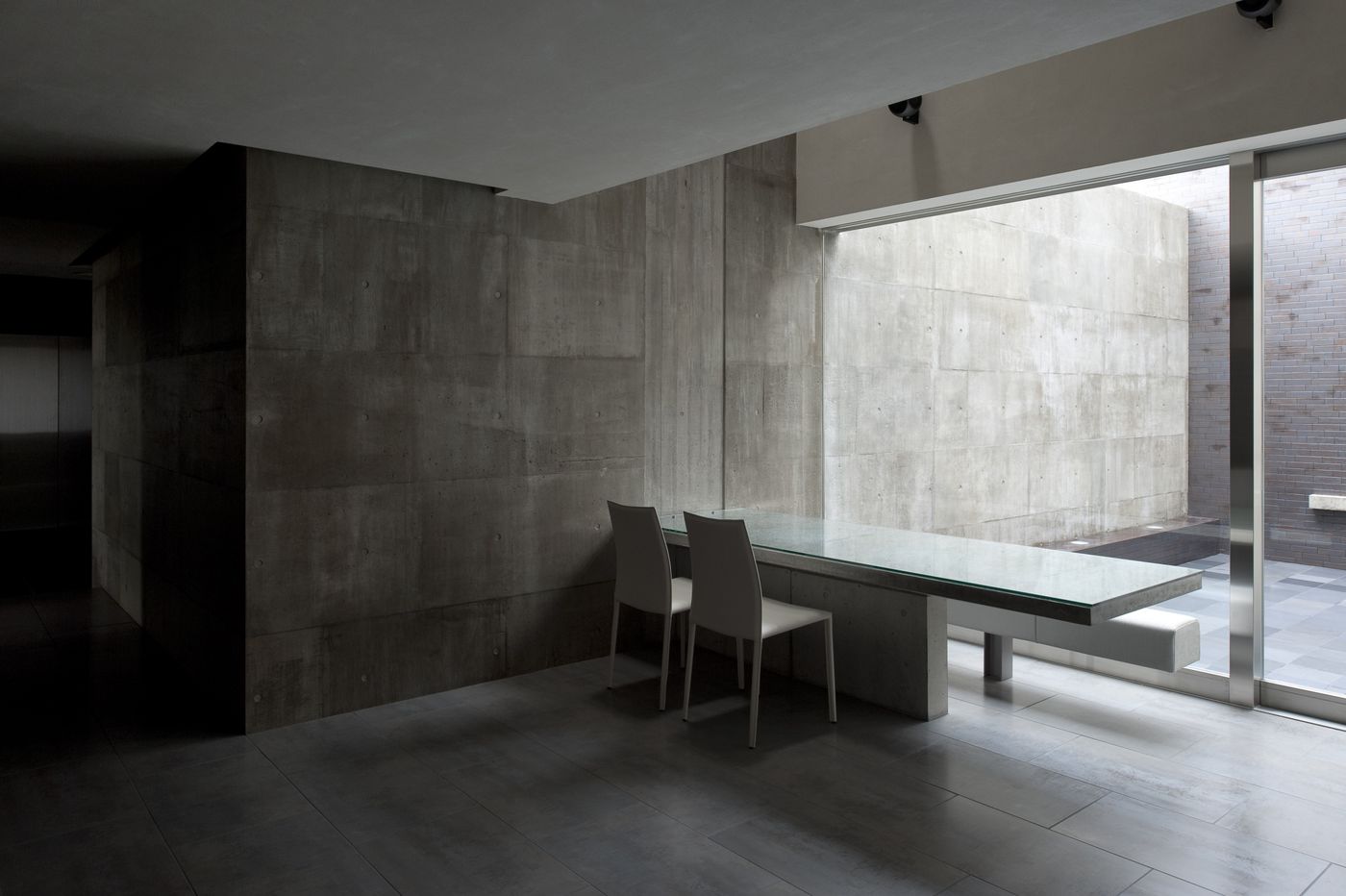
Photo © Kei Nakajima.

Photo © Kei Nakajima.
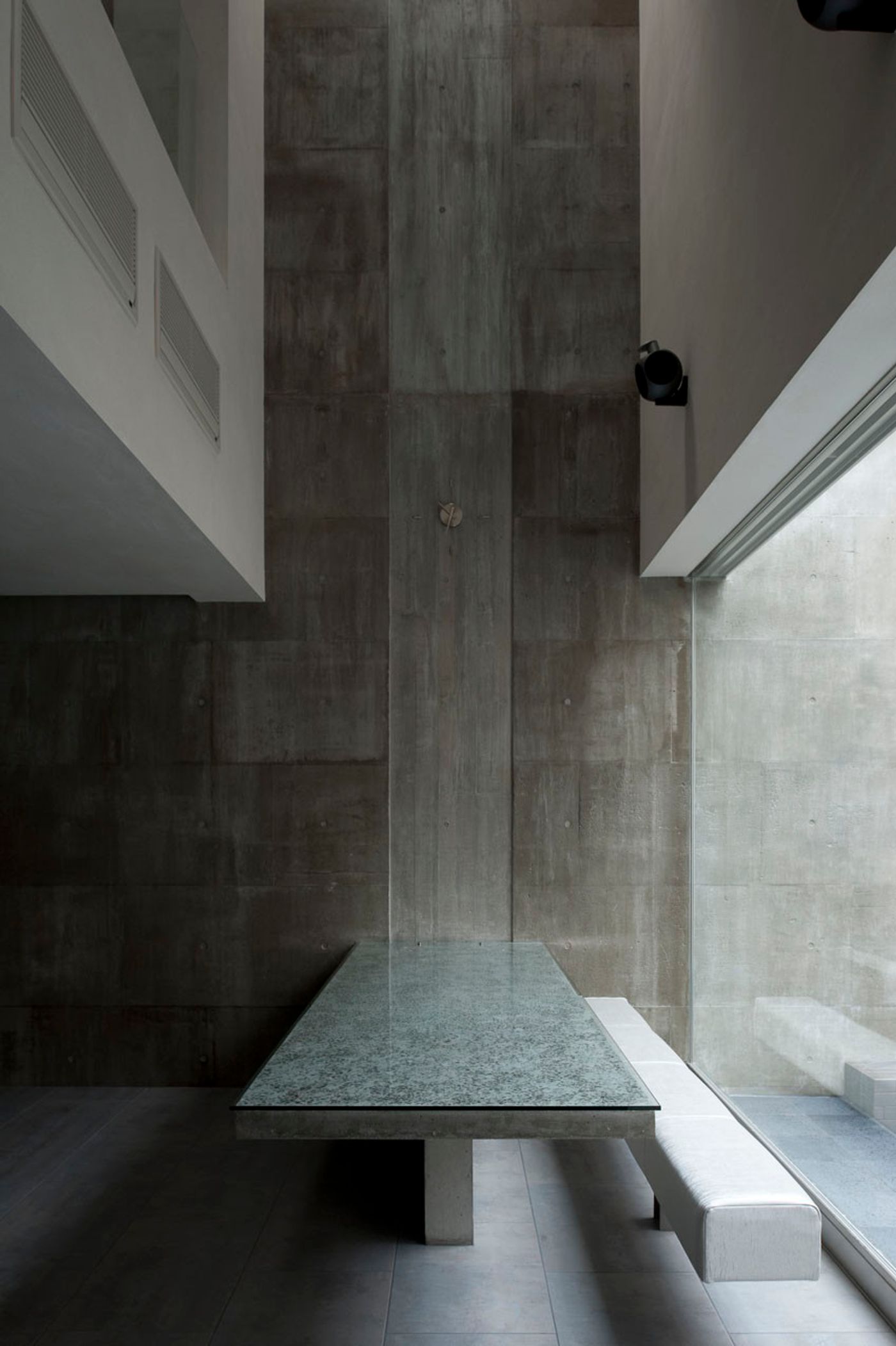
Photo © Kei Nakajima.
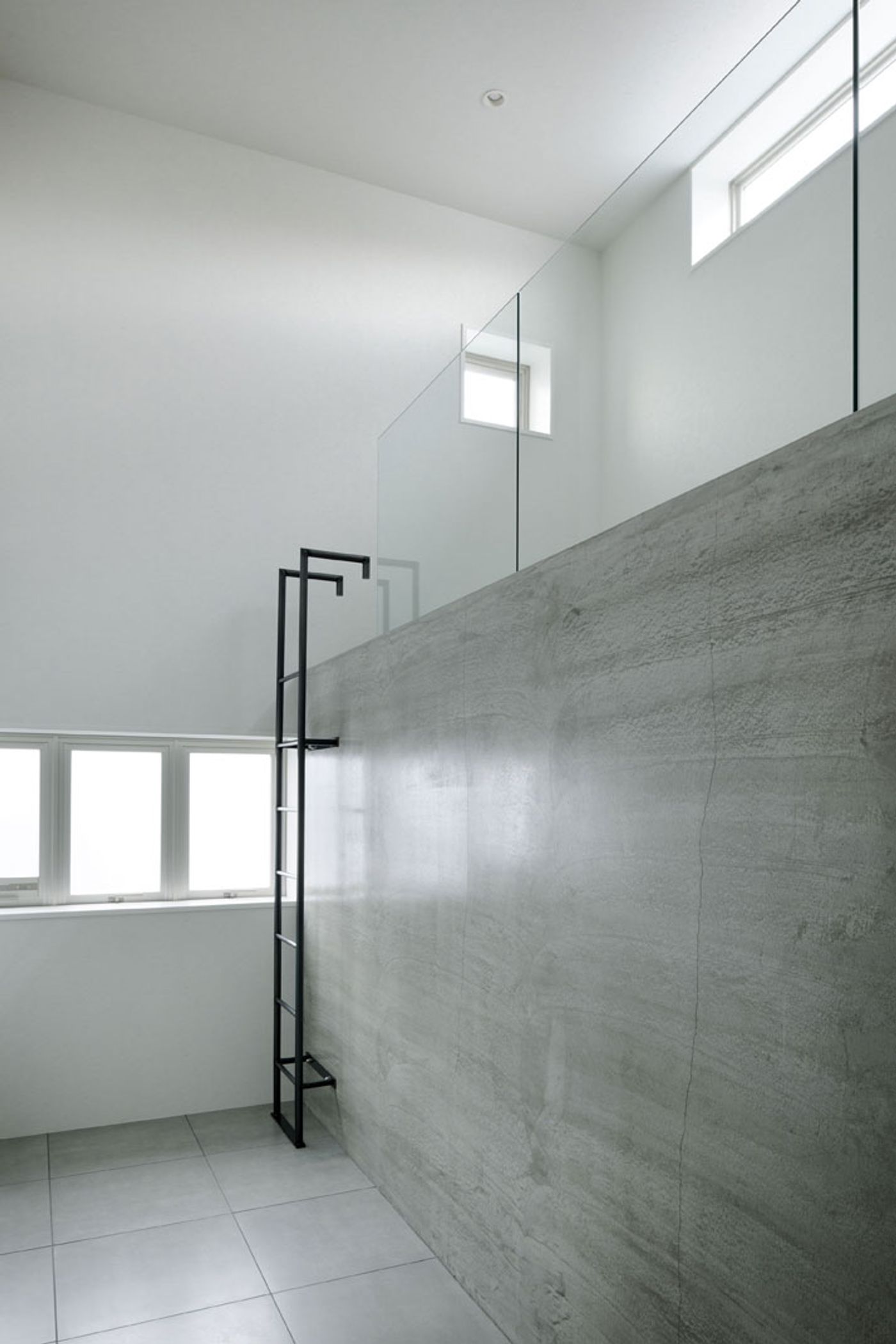
Photo © Kei Nakajima.
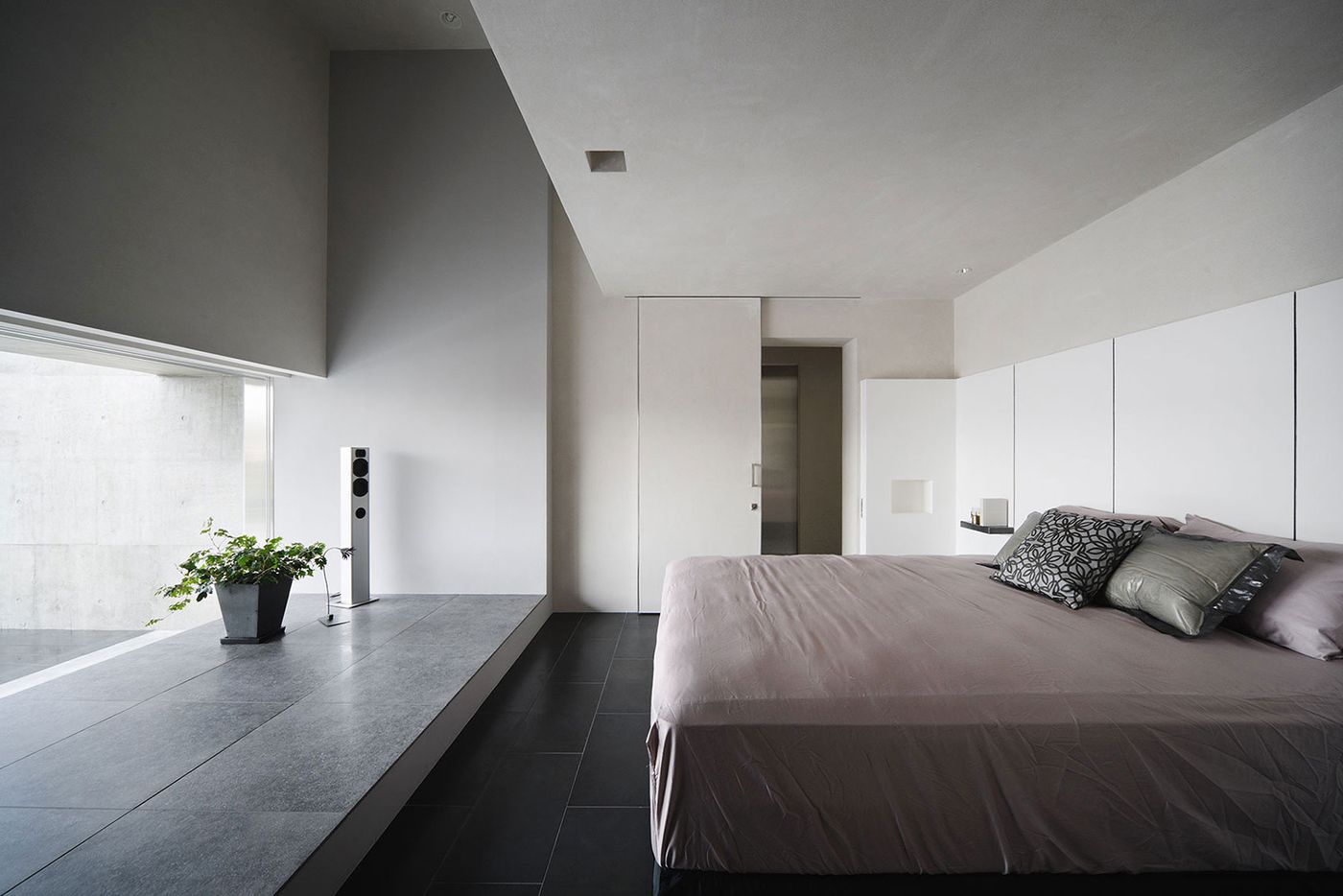
Photo © Kei Nakajima.

Photo © Kei Nakajima.
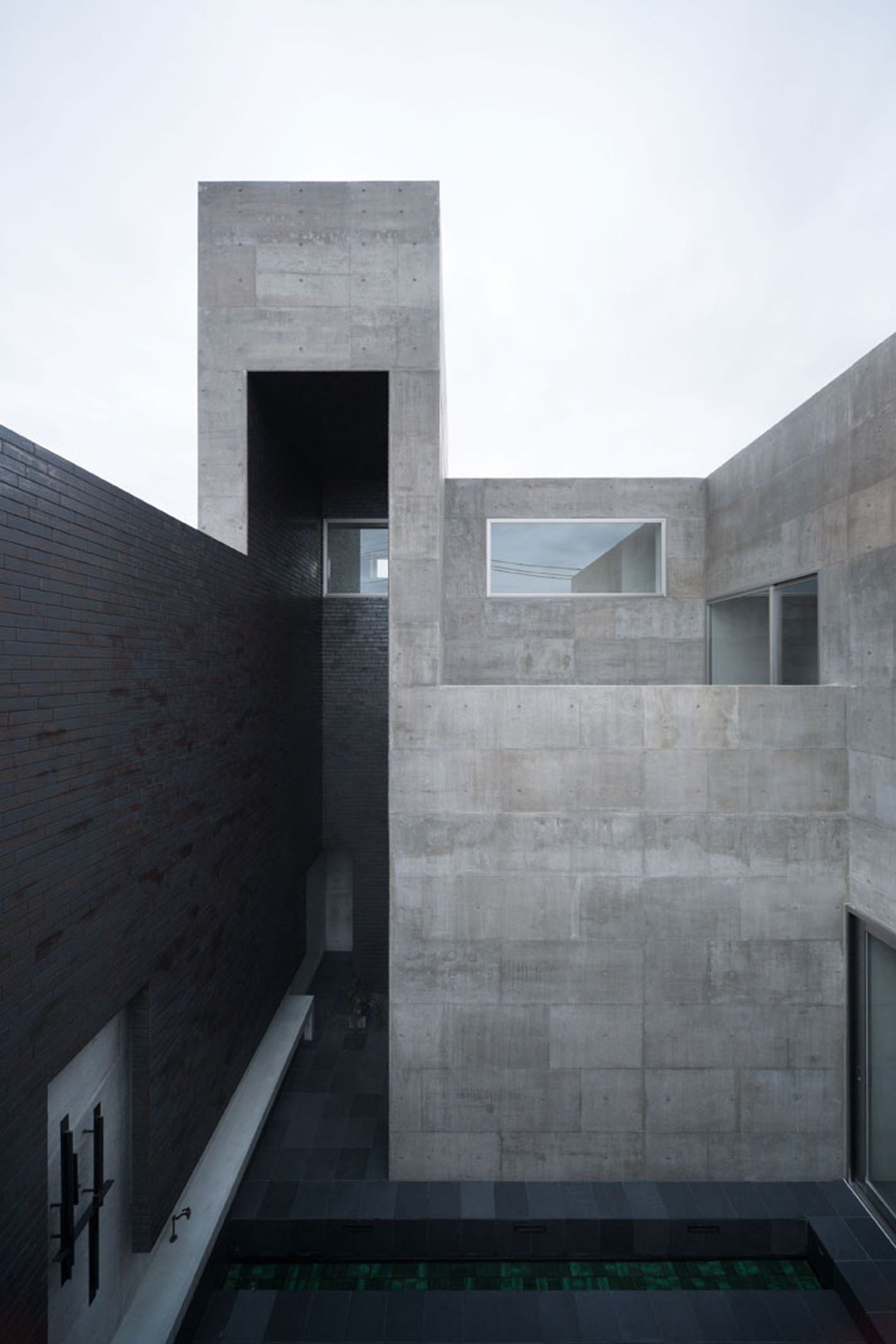
Photo © Kei Nakajima.
